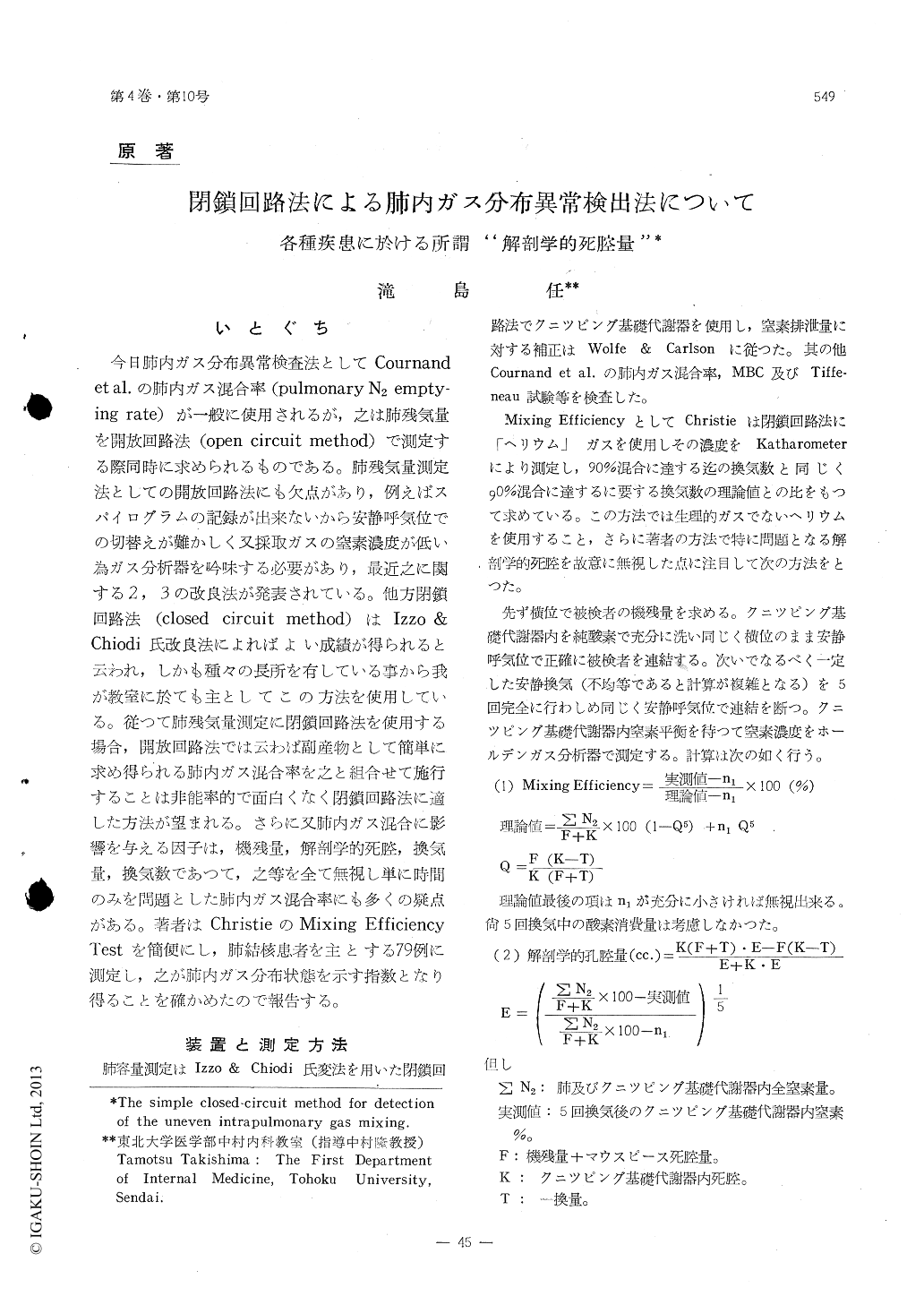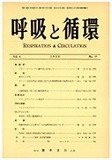Japanese
English
- 有料閲覧
- Abstract 文献概要
- 1ページ目 Look Inside
いとぐち
今日肺内ガス分布異常検査法としてCournand et al. の肺内ガス混合率(pulmonary N2 empty—ing rate)が一般に使用されるが,之は肺残気量を開放回路法(open circuit method)で測定する際同時に求められるものである。肺残気量測定法としての開放回路法にも欠点があり,例えばスパイログラムの記録が出来ないから安静呼気位での切替えが難かしく又採取ガスの窒素濃度が低い為ガス分析器を吟味する必要があり,最近之に関する2,3の改良法が発表されている。他方閉鎖回路法(closed circuit method)はIzzo & Chiodi氏改良法によればよい成績が得られると云われ,しかも種々の長所を有している事から我が教室に於ても主としてこの方法を使用している。従つて肺残気量測定に閉鎖回路法を使用する場合,開放回路法では云わば副産物として簡単に求め得られる肺内ガス混合率を之と組合せて施行することは非能率的で面白くなく閉鎖回路法に適した方法が望まれる。さらに又肺内ガス混合に影響を与える因子は,機残量,解剖学的死腔,換気量,換気数であつて,之等を全て無視し単に時間のみを問題とした肺内ガス混合率にも多くの疑点がある。
The mixing efficiency test of Christie was simply modified by the anther to determine the "anatomical dead space". which was thought to be the new index of intrapulmonary gas mixing. This procedure seemed to be more suitable especially when the residual volume was measured by closed-circuit method.
The seventy-nine tests of 69 patients with pulmonary tuberculosis, bronchiectasis, pulmonary emphy-sema, bronchial asthma, etc. were performed to obtain the "anatomical dead space" with this technique.

Copyright © 1956, Igaku-Shoin Ltd. All rights reserved.


